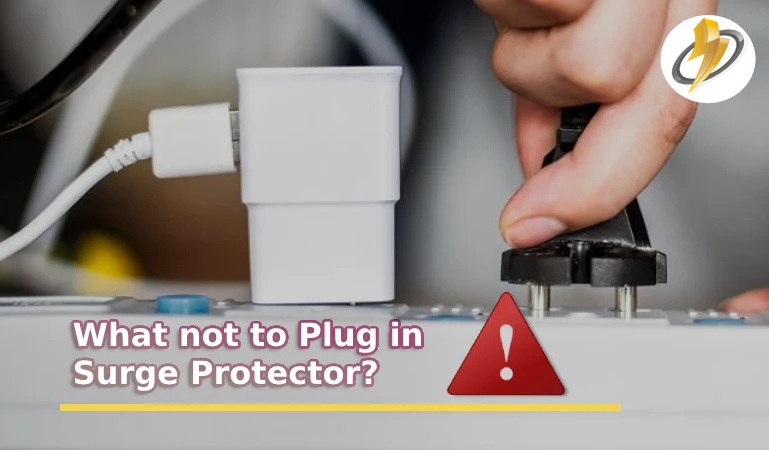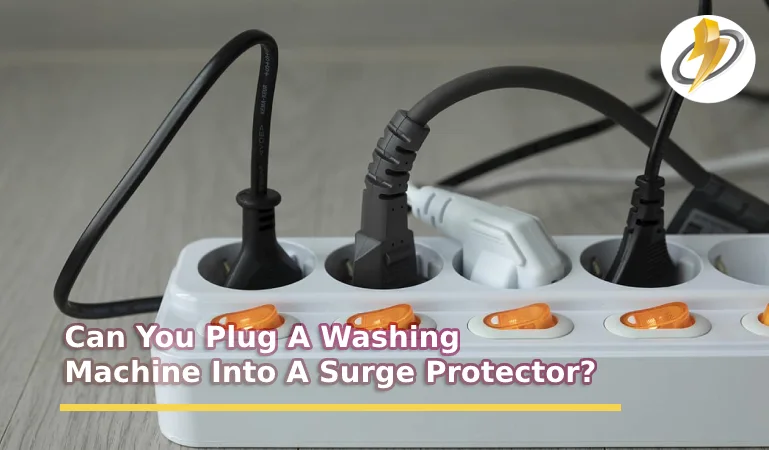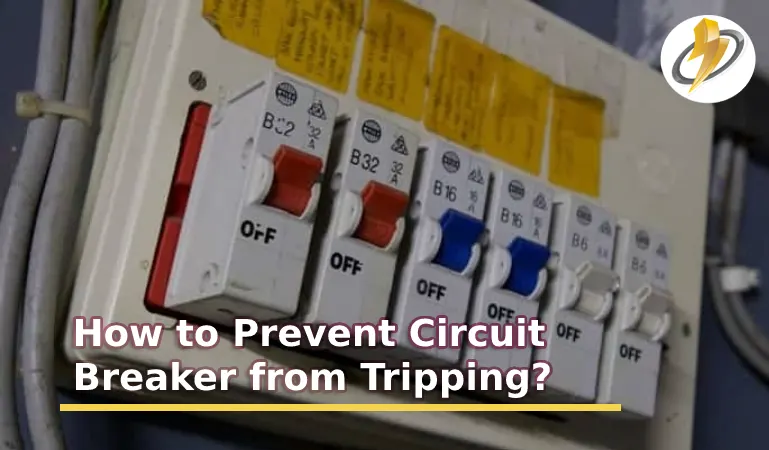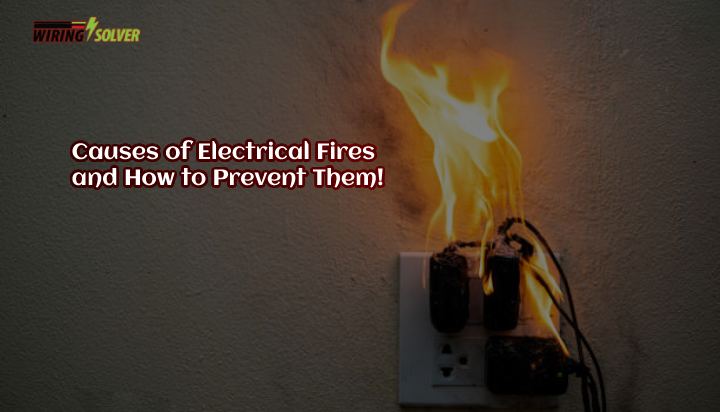Even though a lot of us use the term “surge protector” and “power strip” interchangeably, they are in fact not the same. There are several key differences that set them apart.
A power strip is like an extension for a wall socket with multiple outlets. Whereas a surge protector protects electrical appliances from a power surge. Most times surge protectors look similar to a power strip. But they are in fact, very different from each other.
This article will go through the key differences between a surge protector vs power strip, along with stating the pros and cons of both.
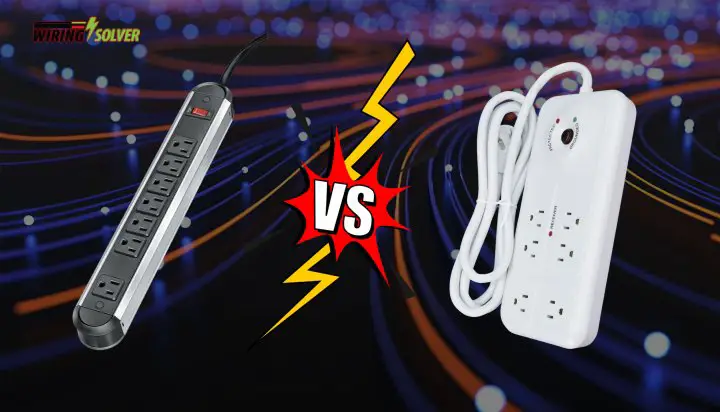
What Is a Power Strip?
A power strip is a device that can provide power to multiple devices at the same time, as well extending the power from the wall socket. They usually have 4-6 sockets on average. But can range from 2 to 12+.
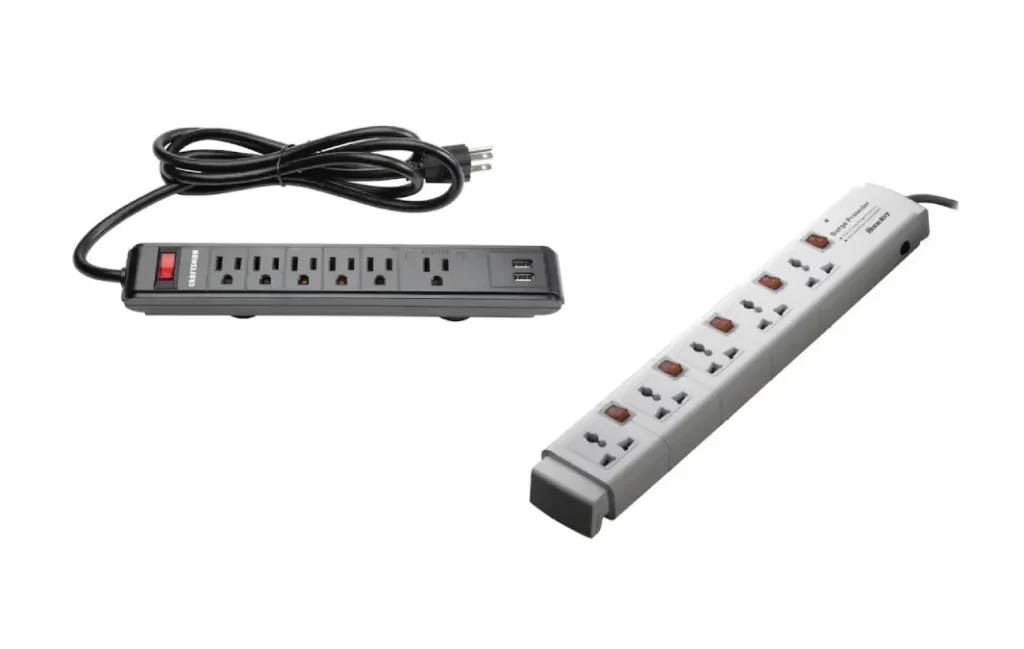
Two power strips can be seen in the picture above (Fig 1), each with 6 individual sockets. They also include an on and off switch. Some power strips may not include one.
Is surge protector necessary for power strip? No, there are several power strips on the market without surge protection.
Pros of a power strip:
- They offer practicality and convenience over traditional outlets.
- They are cheaper than surge protectors.
- They provide a quick, easy, and cheap method of extending power and the number of sockets.
- They often contain an on/off switch. Which can help reduce energy consumption. There is a debate between unplugging vs turning off a power strip.
Cons of a power strip:
- Does not provide surge protection.
- Cannot protect electrical appliances.
- Have a comparatively low energy absorption capacity.
What is a Surge Protector?
A surge protector is a device that uses a specialized circuit that redirects spikes of electricity right into the ground without going through the electrical device. They look almost similar to power strips.
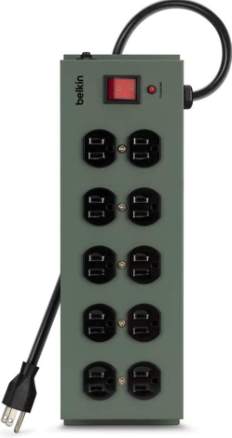
A surge protector can be seen above (Fig 2) from the brand Belkin. It provides users with 10 sockets. Surge protectors are often bulkier than a power strip. But there are exceptions.
Are most power strips surge protectors? Not really. There are still a lot of power strips available on the market as they are comparatively cheaper. However, a whole-house surge protector may also be used.
Pros of a surge protector:
- Provides protection from electrical surges.
- Can help protect electrical devices and appliances.
- Have a higher energy absorption capacity than most power strips.
Cons of a surge protector:
- Comparatively pricier than a power strip.
- A whole-house surge protector can do their work.
- Comparatively heavier than a power strip.
Surge Protector Vs Power Strip: Key Differences
Apart from the level of protection, there are other key features that separate a surge protector from a power strip. Most of them are mentioned in the chart below.
| Differences | Surge Protector | Power Strip |
| Surge Protection | Yes | No |
| Cost | $8 – $50+ | $5 – $40+ |
| Energy Absorption Capacity (Joules) | 1000 – 2000 | <500 |
| Shape | Bulkier | Thinner |
| Flexibility of Use | More flexible, can support most appliances. | Less flexible. Usually advised for low power consumption devices. |
These are some of the most common characteristics that set a surge protector apart from a power strip. These features will be further explained in the following segment.
Surge Protector Vs Power Strip: Which Should I Choose?
The chart provided above provides a glimpse of the common differences between these two. Let’s elaborate on each point.
Surge Protection:
Electrical surges are a common and ferocious enemy to electrical devices and appliances. Not to mention, your household probably sees several power surges throughout each day.
So, one can say without a doubt that surge protection is a very necessary feature for the protection of your devices. Especially high-power-consuming devices such as televisions, refrigerators, electric heaters, etc.
In terms of protection, a surge protector definitely takes the cake.
Cost:
The cost will vary based on how many sockets are present. The case is the same for power strips as well.
But if you wish to choose a power strip and a surge protector containing the same amount of sockets, the surge protector will most likely cost $5 to $10 more than the power strip.
Which is a small price to pay for the huge amount of protection you get in return. A power surge can cause you major damage ranging from a few hundred bucks all the way up to a few thousand.
It is highly advised to invest a few extra dollars and opt for a surge protector.
Energy Absorption Capacity:
Surge protectors have a significantly high amount of energy absorption capacity. They can absorb energy starting from a hundred joules all the way up to 2000. And a special Belkin surge protector has a whopping 3,940-joule energy rating.
But on the other hand, most common power strips can only handle around 150 joules up to 300 joules. The best-case scenario is 500 joules, but those are rare.
In terms of energy absorption capacity, power strips do not even come close to surge protectors.
Shape:
As surge protectors contain additional circuits to regulate and absorb electrical current and surges, they are comparatively bulkier than a power strip.
And since power strips do not contain those additional circuits inside, they tend to be slicker and lighter than surge protectors.
The flexibility of Use:
Surge protectors are designed to support all manners of devices. Computers, electric heaters, televisions, phone chargers, etc.
But on the other hand, power strips are mostly recommended for low-power consuming devices. Such as mobile phone chargers, table fans, lamps, etc.
Hence, surge protectors have greater flexibility of use than regular power strips.
Summary
This article talks in detail about the key differences between a surge protector vs power strip. It is advised to use surge protectors in most cases. As the investment is worth every penny.
However, you may use power strips for small-scale power supply and with devices with low power consumption.

![Surge Protector Lights and Their Functions [ Complete Guide]](https://wiringsolver.com/wp-content/uploads/2022/11/Surge-Protector-Lights-and-Their-Functions.jpg)
![Belkin Surge Protector is Not Working!! [Solved]](https://wiringsolver.com/wp-content/uploads/2022/07/Causes-Behind-a-Belkin-Surge-Protector-Not-Working.webp)
